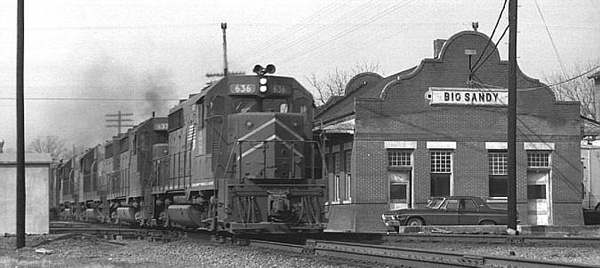In 1891, the Railroad Commission of Texas was established under a constitutional mandate to prevent discrimination in railroad charges and establish reasonable tariffs.
It is the oldest regulatory agency in the state and one of the oldest of its kind in the nation.
History Of The Texas RailRoad Commission
In the late 1880’s, the floor of the Texas House was not a very peaceful place. Railroad supporters where battling against the Governor (James Hogg). When he was Attorney General, Hogg had taken on the railroads, prosecuting several of them as well as the rate-setting organization of railroads, the Texas Traffic Association, for monopolistic actions and conspiracy to discourage competition.
During his election in 1890 for Governor, he ran on creating a commission to regulate the railroads. When he won the election, it was clear there was going to be a major fight coming.
Unlike the Eastern US railroad system- which followed the major population centers, the Texas system was actually creating the population centers. By building out to areas without any sort of commerce or major residents, the goal was for the railroad system to encourage growth in those developing areas.
The problem, was the sheer volume of capital required to make this happen. From land grants, to incentivizing materials purchases, everything had to be negotiated and thought out well in advance.
To encourage purchases, the railroads sought to endow selected communities with an aura of stability by aiding in the building of sturdy courthouses, jails, and even churches.
After awarding over 6 thousand acres of land for the railroad, the next year, the law authorizing land grants was repealed and there was no more available public land.
With the growth stopped, the next big hurdle came from the tariffs and fees levied on different tracks of the current railroad. Routes were allowed to set their own fees and this caused major problems. Basically, if a route was cheaper, even it doubled the amount of distance traveled, that route was selected 99% of the time.
These differing rates forced the hand of the government for some type of regulation. Enter the Railroad Commission of Texas…
Lowering Rates Across The Board
Within a very short period of time after its creation, the Railroad Commission cut the rates railroads were allowed to charge. Almost immediately, the Commission was taken to court and placed under injunction. It was not until 1894 when the United States Supreme Court ruled that the act creating the Railroad Commission was constitutional that the lower rates were put into effect.
It was done an easy task to regulate things. The railroad supporters made an unsuccessful run at having the legislature abolish the Commission. However, in 1893, the Commission was granted statutory authority to regulate issuance of railroad stocks and bonds.
Another key amendment was passed In 1894 – the constitution was amended to change the office of the three Commissioners from appointive to elective, with six year staggered terms.
Clarifying The Responsibilities For The Texas Railroad Commission
- Administration of laws relating to the railroads of Texas.
- Determination of passenger fares, freight rates, and charges for all classes of common carriers in Texas.
- Holding public hearings.
- Receiving of reports, making investigations, and keeping of records regarding fiscal structure, valuation, revenues and expenses, and train, terminal, and traffic service of Texas railroads.
Evolution Of Responsibilites
Over recent decades, the role of the Railroad Commission in the regulation of railroads has changed, moving from economic regulation to safety regulation. The Federal Railroad Safety Act of 1970 vested rail safety responsibilities in the Federal Railroad Administration. In 1983, the Railroad Commission began a cooperative process with the federal government, implementing a rail safety program.
The Rail Safety and Planning section of the Transportation/Gas Utilities Division monitors the state’s rail lines, inspecting railroad equipment, operations, and track. This section also maintains the state’s rail planning program and oversees the use of federal funds for track rehabilitation projects.
Under provisions of the 1980 Federal Staggers Rail Act, the Railroad Commission recognized that it could hold only a passive role in rate setting. In 1984, the Railroad Commission ceased its historic role in economic regulation of the Texas rail industry.
